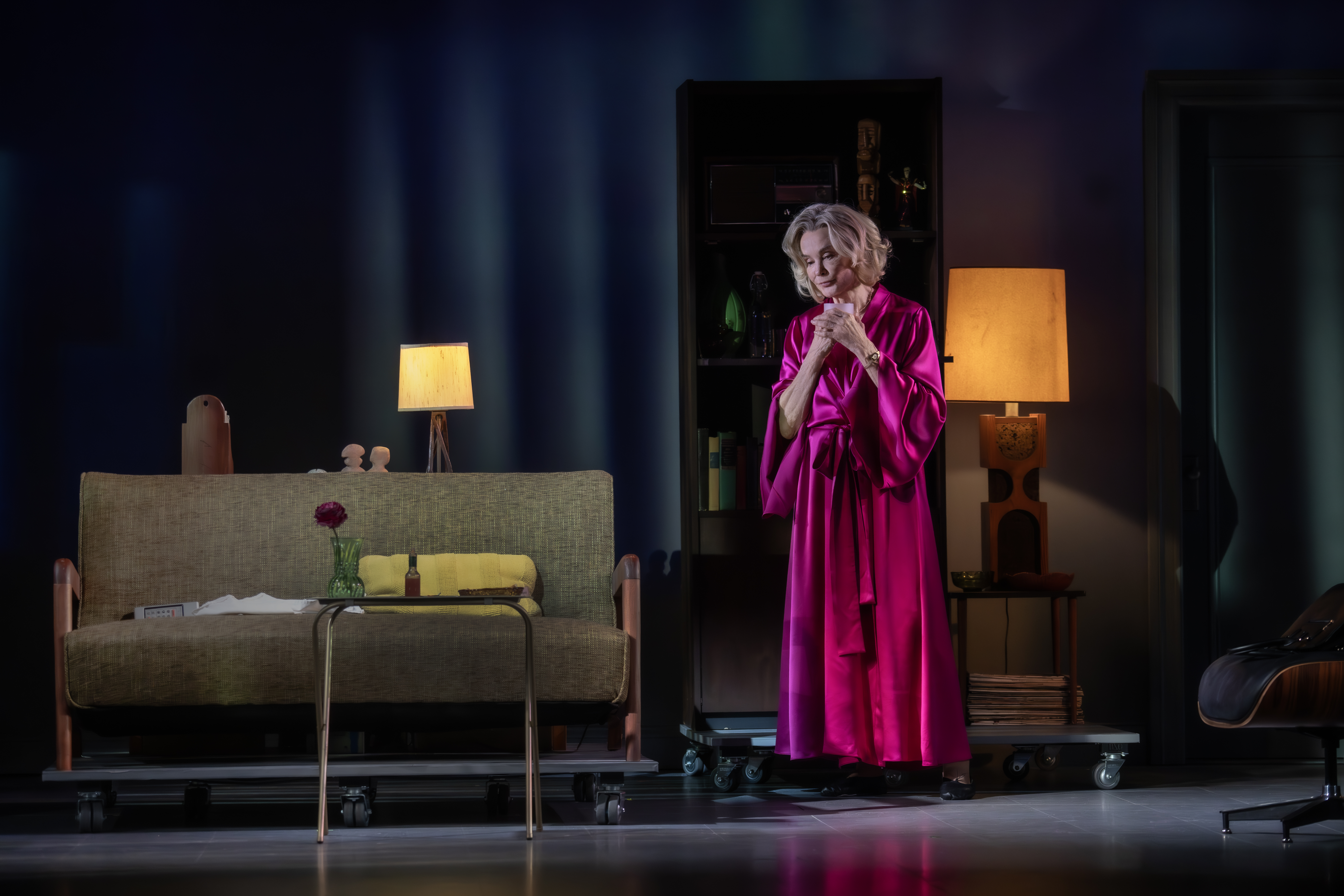Pas de Trois: Michael and Marisa Cerveris’ Family Dance with George Balanchine

(© The Cerveri Vault)
Marisa Cerveris is fixated on the man in the ribbon tie. She examines his greying hair, receding and combed back off the forehead, a sloping nose, and two delicately poised hands. “It’s like seeing a ghost,” she says as he hinges at the hips, making space for a lithe ballerina on pointe to drape over his back like a crescent moon.
On The Other Hand
“Absolute terror,” Michael says, by way of describing what being Balanchine is like when Marisa’s in the Mitzi E. Newhouse, where Nikolai currently dances, frets, and waxes poetic. (Directed by David Cromer and written by Richard Nelson, the production plays through June 16.)
Fortunately, his career has included a parade of historical portrayals, including HMS Titanic architect Thomas Andrews, assassin John Wilkes Booth, composer Kurt Weill, con artist Wilson Mizner, Argentine dictator Juan Perón, and barber Sweeney Todd. (Do we know there wasn’t a Sweeney Todd?) Critics have equally appreciated his Balanchine. TheaterMania’s Brian Scott Lipton called the performance one of the strongest in the 18-person production.

(© Paul Kolnik)
A veteran of Balanchine’s NYCB creations, Marisa’s critical eye is more lethal than lenient, but in this case, no less enthusiastic. “Michael’s capturing [Balanchine]’s essence clearly,” she explains. “That proud look down his nose, his little sniffing, the blinking and twitches — those are things only people who knew him would look for, but they’re there.” And the all-important hands, a ballet make-or-break? “Suki Schorer, one of the keepers of Balanchine’s technique, taught me…and now Michael. She says Michael has beautiful hands.”
Which may be the single greatest compliment of his 30-year career. “When NYCB people have said, ‘You captured him,’ or ‘Your hands were beautiful, just right,’ it’s been like winning all the Tonys I was ever nominated for but didn’t,” he says, half joking.
Curious About George
The real George Balanchine was the kind of idiosyncratic demigod who culture writers slap-fight to capture best. Both married and dancing professionally by age 19, he dumped Russia for censoring his avant-ballet (read: Russian dancing in bare feet) leanings by 1924. He landed in America come 1933, founded the School for American Ballet, married and divorced enough stunning ballerinas to form their own corps de ballet, and nurtured commissions from across the globe. When he died in 1983 from a form of mad cow disease, his body of work included over 400 ballets, cementing his position as one of the most significant creatives of the century.

(© The Cerveri Vault)
Marisa Cerveris arrived at New York City’s SAB in 1979, just in time to become one of the last generation of dancers tapped by Balanchine himself for the NYCB corps de ballet.
“People have to understand that’s less creepy than it sounds!” Marisa laughs. “Back then I was rehearsing on the old Juilliard campus, where our parents met.” (In truth, the entire Cerveris family is connected to the Lincoln Center area: Mom studied modern dance with Martha Graham; Dad trained as a classical pianist; Marisa danced with NYCB; youngest child, Todd, played in South Pacific; and Michael’s run in Nikolai is predated by Cymbeline, also produced at Lincoln Center.) “Michael had just come to a town of hustlers as a hungry actor. I was part of a company of 100 people. It made sense for him to join us. Now they all call me saying he’s the ghost of Mr. B.”

(© Paul Kolnik)
Michael assimilated easily into the ballet world, but was happier in the wings. “Their careers are so brief, and the sacrifices so great, that the demands it makes on the bodies and spirits of the dancers is brutal,” he recalls. And while Michael was impressed by dancers like Peter Martins and Mikhail Baryshnikov, Marisa awed him.
His role as a familial cheerleader even led to Michael’s closest in-person encounter with the choreographer himself. “I was watching Marisa’s class, before she was in the company. I was sitting by the mirrors with my back to the door when I suddenly felt the temperature in the room change. I felt this presence vibrating behind me and turned to see Mr. B. striding by me, this energy radiating from him as he passed. It told me something visceral, something I’ve aspired to with this play.”
Marisa finally consummated Michael’s torrid affair with ballet and Balanchine in 1982, when she wrangled him a place in the cast for NYCB’s presentation of Vienna Waltzes. He played a waiter in a crowd scene, and showcased his young talent by not breaking anything.

(© The Cerveri Vault)
Marisa, now the creator of two lines of seamless dance and fitness wear, ByMarisa and SteelCore, has since retired from the ballet, but feels a renewed connection to it through each performance of Nikolai.
When asked about the Mr. B. Michael is in the play, a still virile married man with an eye for pretty things, Marisa reveals her only quarrel with Nelson’s play. “It seems just a bit much in the show. There were stories about that version of him, but I never saw it. He used to say, ‘Ballet is woman,’ that a woman is a flower and a man just a flowerpot. Maybe I was naive, but it didn’t seem inappropriate. It’s a great career to be the straight guy in the ballet.”
“I could be a bald Billy Crudup”
Sibling-induced performance anxiety aside, Cerveris is thankful for this play’s Balanchine, even flawed. “It’s a delight,” he says of diversifying his résumé of schizoids and bigots. “When people need a sociopath or alien, they call Cerveris. I keep thinking, ‘I could be the outta-left-field Dad, or a bald Billy Crudup, or soulful-complicated leading man, right?’ So playing a non-murderous, non-sinking genius revered despite his very human failings is pretty great, thank you.”
And audiences keep fingers crossed. Vienna Waltzes may have only been the most recent taking of Lincoln Center by in-tandem Cerveri.
“My father has a dream of The Cerveris Family Circus doing a multidisciplinary night set to the music of Erik Satie,” he says, blue eyes animated. “An After-Dinner Farrago, you know? We have the people to do it.” Grant-writing may be in order.
Until then, Michael and Marisa have those ballet salad days to look back on, as well as fresh audiences eight shows a week for Mr. B’s beautiful hands.

(© Paul Kolnik)











